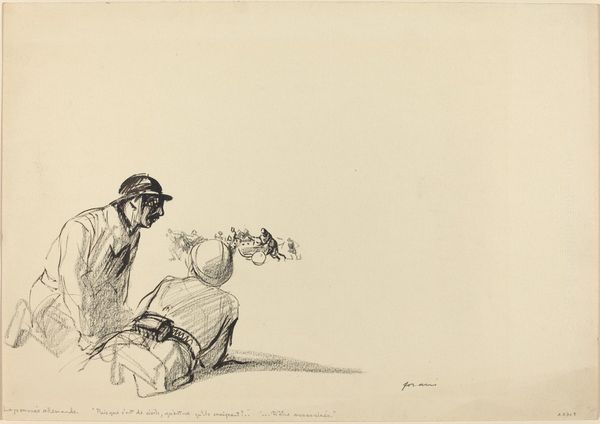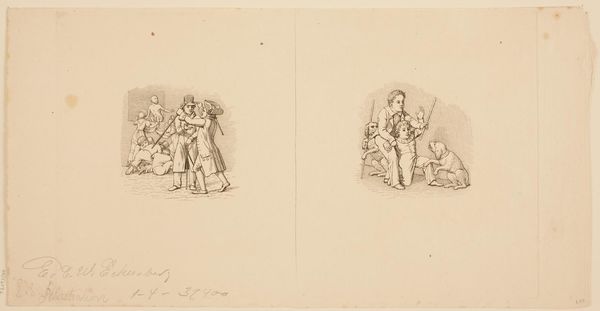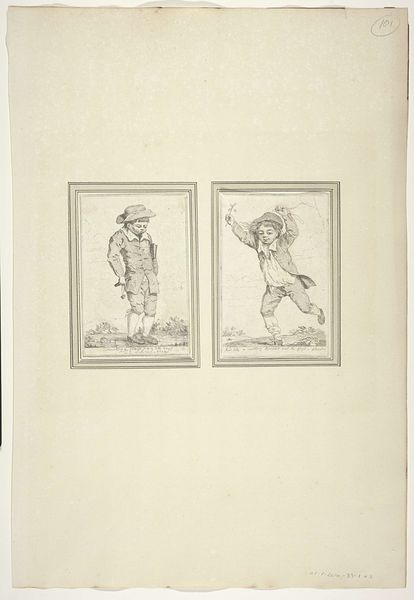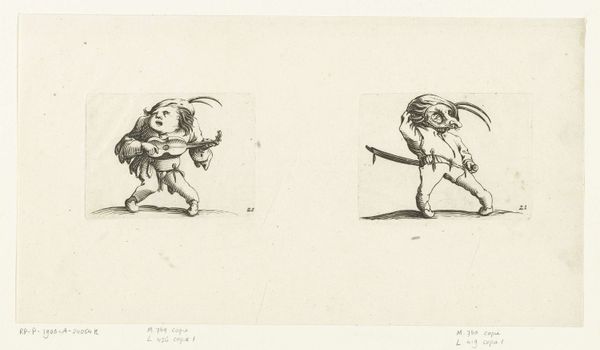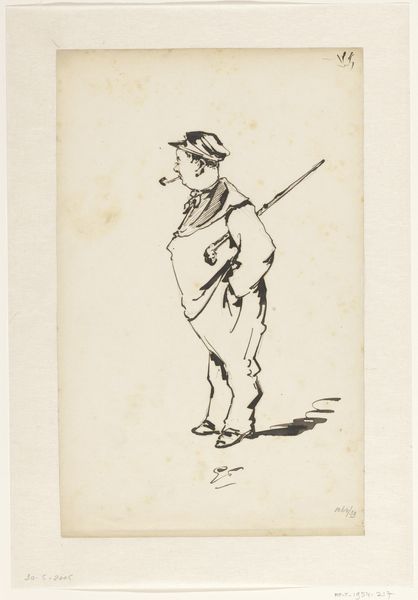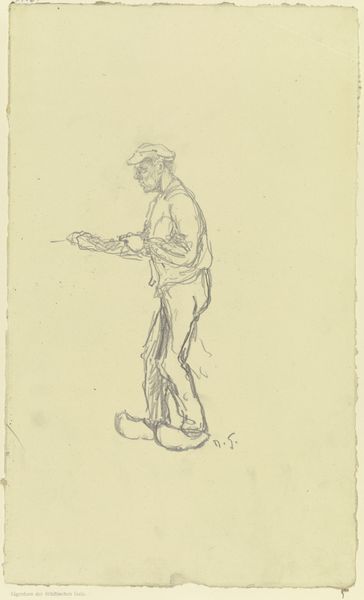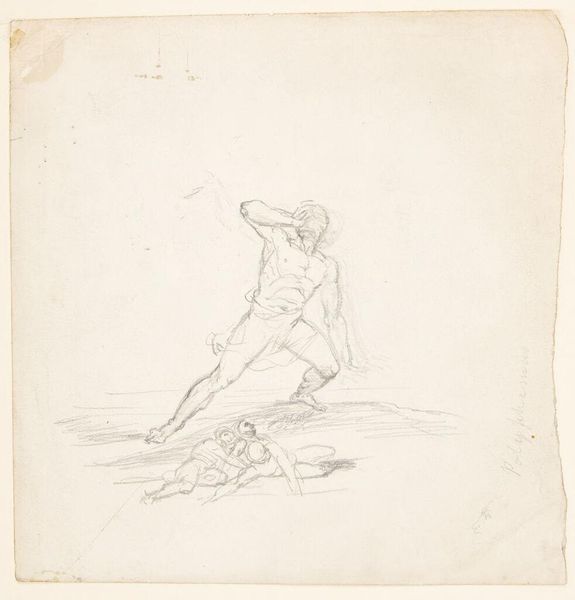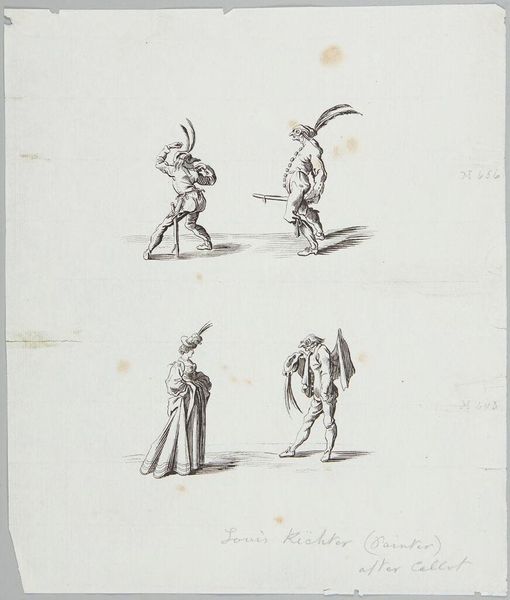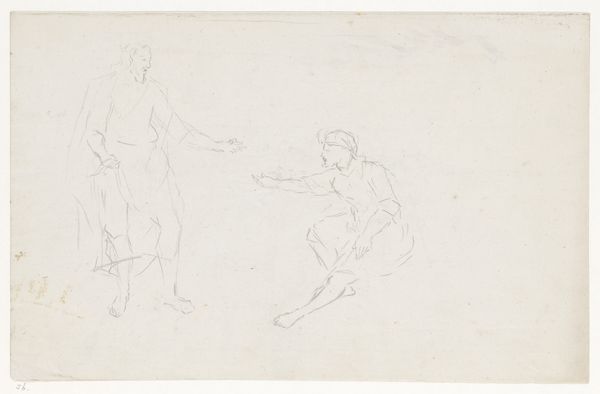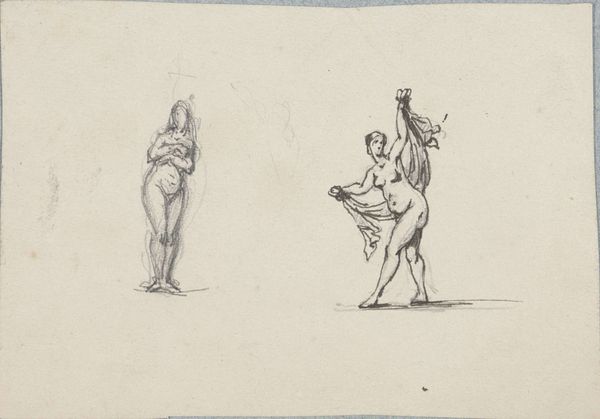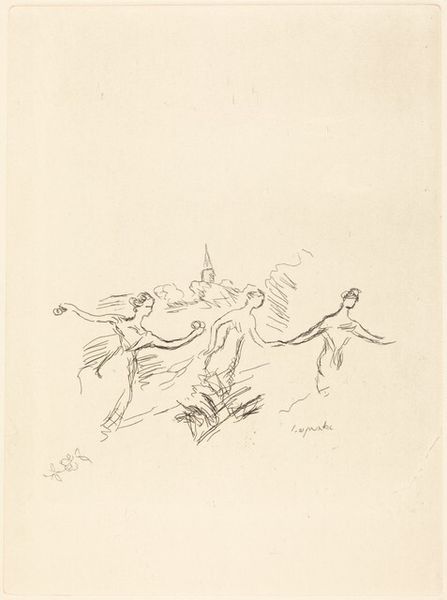
drawing, print, etching
#
drawing
#
narrative-art
# print
#
etching
#
etching
#
figuration
#
line
Dimensions: 172 mm (height) x 290 mm (width) (plademaal)
Curator: Two illustrations for “Fabler for børn,” created by Erling Eckersberg between 1808 and 1889. They're etchings, simple line drawings depicting boys engaged in play, very unassuming at first glance. Editor: Unassuming is right. They're faint, almost ghost-like. And what’s with the scale? There is such vastness surrounding them! There's a strange sort of desolation conveyed in what should feel carefree and childish. I am intrigued, yet melancholic. Curator: Consider the materials—etching on paper, mass-produced, accessible. These weren't intended for a palace wall, but for children, likely within printed books. The purpose, fundamentally, is education, even morality. Editor: Aha! And how do these images, these two separate scenes of children playing, play into the political and social structures of the era? Are these “good boys,” fitting within accepted social mores of conduct and behavior? Curator: It's less about the individual actions, I suspect, and more about cultivating a literate, moral populace. Eckersberg was deeply embedded within the Danish Golden Age art scene, with connections to intellectual circles that emphasized education as a form of social upliftment. These fables served as miniature didactic plays for children. Editor: So, less about revolutionary fervor and more about cultivating quiet acceptance of the dominant narrative? The prints themselves are inexpensive, widely distributed, thus contributing to a collective understanding of propriety through narrative and imagery? It’s almost manipulative, in a quiet way. Curator: That's a very contemporary reading! However, look closer and appreciate the delicate lines. This kind of labor demonstrates the effort put into creating and distributing moral tales to teach children how to be civilized subjects through production itself, the prints themselves standing as material proof of that investment. Editor: That changes the way I consider this set of illustrations. Thank you, that deeper insight reframes it as more complex artifact, beyond a simple, quiet moment of childhood. Curator: Yes, seeing them with those considerations helps unveil a deeper layer about social context of these times and this region.
Comments
No comments
Be the first to comment and join the conversation on the ultimate creative platform.

